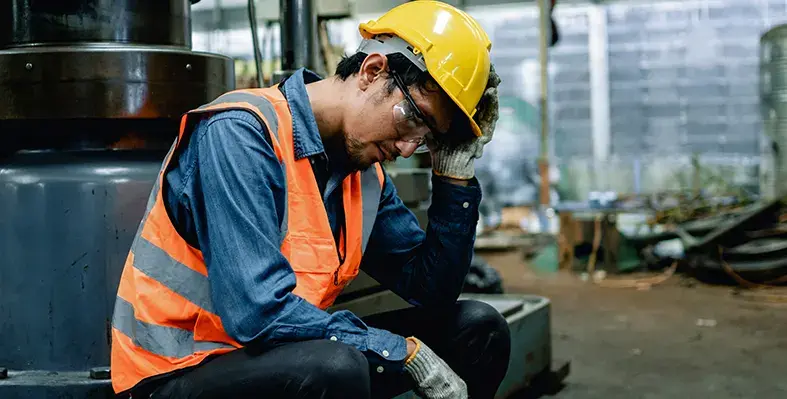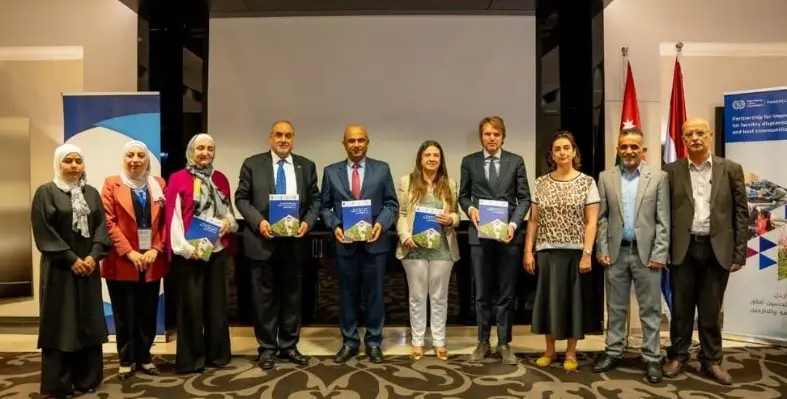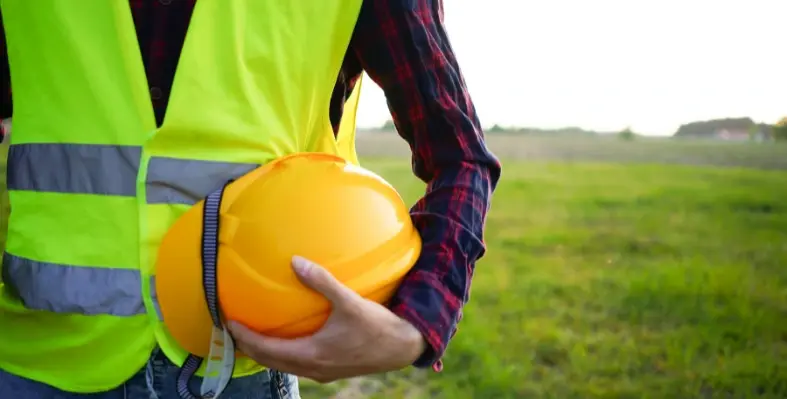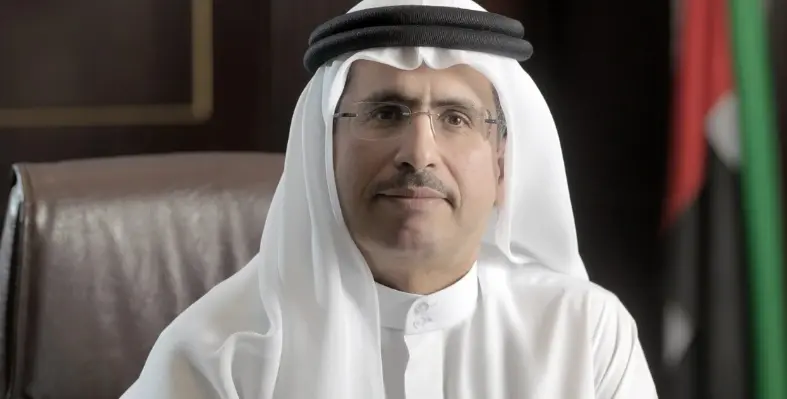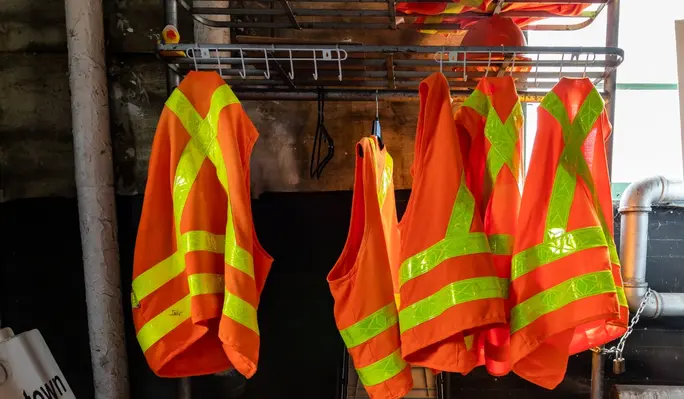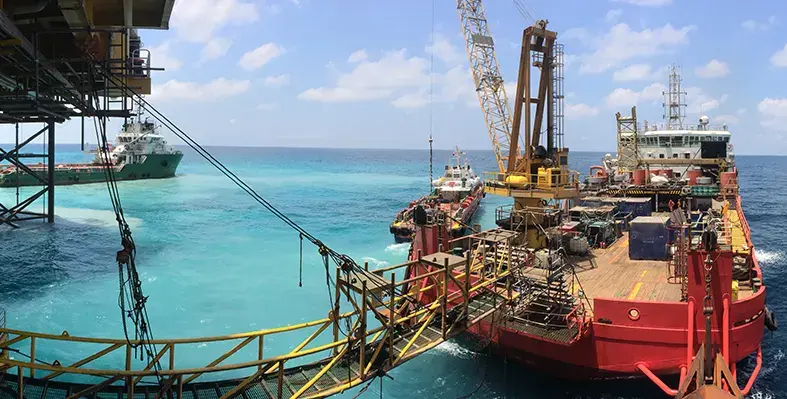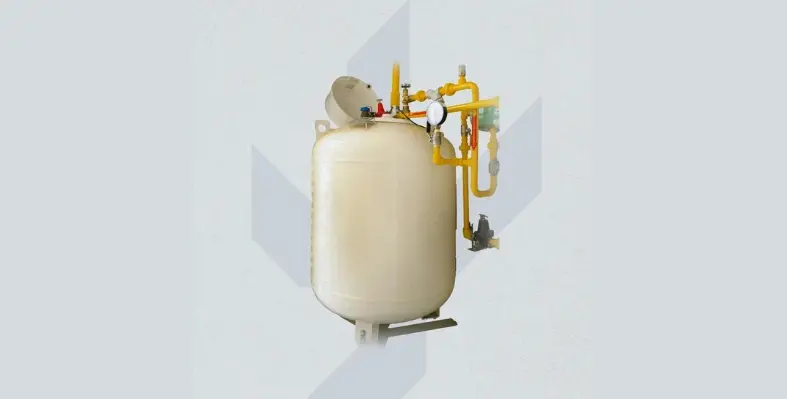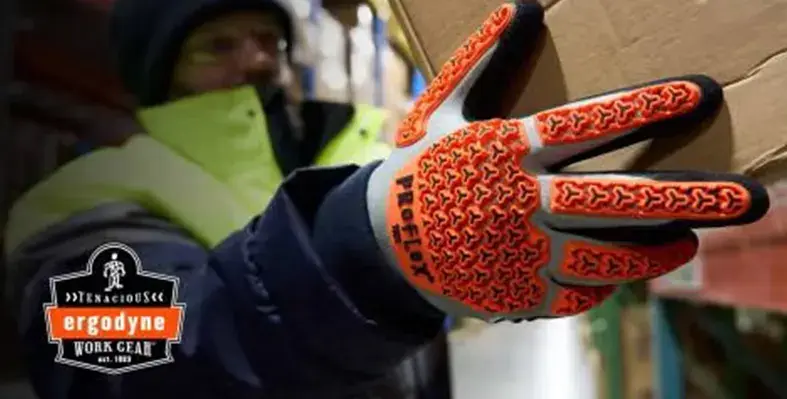Industrial Insights
Industrial Insights
- Details
- Louise Waters
- Industrial Insights
- Topic: HSE
- Date: 26 August 2025
- Year: 2025
The World Health Organization (WHO) and the World Meteorological Organization (WMO) have published a new joint report and guidance highlighting the growing global health risks to workers posed by extreme heat
As more frequent and intense heatwaves occur due to climate change, many workers who are regularly exposed to dangerous heat conditions are already feeling the health impacts of rising temperatures, in particular, manual workers in sectors such as agriculture, construction and fisheries. Increasing heat episodes are also leading to health issues for vulnerable populations in developing countries, such as children, older adults and low-income populations. Health risks include heatstroke, dehydration, kidney dysfunction, and neurological disorders, and worker productivity drops by 2–3% for every degree above 20°C.
The new report and technical guidance, entitled ‘Climate change and workplace heat stress’, highlights that the health and productivity of workers are severely impacted by rising temperatures. WMO reports that 2024 was the hottest year on record. Daytime temperatures of more than 40°C and even above 50°C are becoming increasingly common, a clear indication that immediate action is needed to address the worsening impact of heat stress on workers worldwide.
To tackle these challenges, the report calls for the implementation of occupational heat action plans, tailored to specific industries and regions, and developed in collaboration with employers, workers, unions, and public health experts.
Recommended actions
The recommended actions include:
- Develop occupational heat-health policies with tailored plans and advisories that consider local weather patterns, specific jobs, and worker vulnerabilities;
- Focus on vulnerable populations with special attention given to middle-aged and older workers, individuals with chronic health conditions, and those with lower physical fitness who can be more susceptible to the effects of heat stress;
- Education and awareness raising for first responders, health professionals, employers, and workers to recognize and properly treat heat stress symptoms, which are often misdiagnosed;
- Engage all stakeholders from workers and trade unions to health experts and local authorities in the co-creation of heat-health strategies that are locally relevant and widely supported.
- Design solutions that are not only effective but also practical, affordable and environmentally sustainable, ensuring policies can be implemented at scale.
- Embrace innovation by adopting technologies that can help safeguard health while maintaining productivity.
- Support further research and evaluation to strengthen the effectiveness of occupational heat-health measures and ensure maximum protection for workers worldwide.
The new report and technical guidance follow the recent International Labour Organization (ILO) reports which highlight that more than 2.4bn workers are exposed to excessive heat globally, resulting in more than 22.85mn occupational injuries each year.
“Heat stress is already harming the health and livelihoods of billions of workers, especially in the most vulnerable communities,” said Dr Jeremy Farrar, WHO assistant director-general, Health Promotion, Disease Prevention and Care. “This new guidance offers practical, evidence-based solutions to protect lives, reduce inequality, and build more resilient workforces in a warming world.”
- Details
- Sania Aziz
- Industrial Insights
- Date: 20 august, 2025
- Year: 2025
The Ministry of Labor, in collaboration with the International Labour Organization (ILO) and local and international partners, has launched a guidance manual on occupational safety and health (OSH) for the agriculture sector, according to a report by Jordan News Agency (Petra).
Iman Abdallat, acting director of the Occupational Safety and Health Directorate at the Ministry of Labor, said the manual underscores Jordan’s commitment to safe and healthy workplaces.
A safe work environment is a basic human right and a key driver of productivity, reducing economic losses from accidents and injuries, and supporting livelihoods and food security, she noted.
Abdallat highlighted that the ministry has updated OSH regulations, instructions, and decisions over the past two years to keep pace with labour-market developments.
These updates complement Agricultural Workers Regulation No. 19 of 2021 and its 2025 amendment, which govern working hours, annual, sick and maternity leave, minimum wage, housing, OSH requirements, and prohibit child labour in hazardous agricultural work.
She added that the ministry is working to foster a national safety culture linked to productivity outcomes.
Mohammad Hiyari, secretary-general of the Ministry of Agriculture, emphasised that improving farmers’ skills and working conditions is central to boosting productivity and quality of life.
He noted that farm workers face multiple risks, including unsafe chemical use, heavy machinery, harsh weather, and lack of protective equipment and training, highlighting the manual’s role as a practical guide prepared by the ILO in coordination with national experts.
Amal Mowafy, ILO Jordan Country Coordinator, said the manual provides comprehensive guidance for employers, inspectors, agricultural extension officers, and workers to identify and prevent workplace hazards, reduce accidents and occupational diseases, and comply with national and international OSH standards.
She added that the initiative supports the creation of decent, safe, and productive workplaces across Jordan’s agricultural subsectors.
Khaled Fanatsa, president of the General Federation of Jordanian Trade Unions, also attended the launch, reinforcing the importance of safeguarding worker rights and promoting a culture of safety across the sector.
The manual is expected to serve as a key reference for ensuring occupational safety while contributing to productivity, sustainability, and the well-being of workers across Jordan’s agriculture industry.
- Details
- Sania Aziz
- Industrial Insights
- Date: 19 August, 2025
- Year: 2025
The global workplace safety market is poised for strong growth, with a projected compound annual growth rate (CAGR) of 13.5% from 2024 to 2031, according to a new report from Verified Market Research.
Valued at US$16.12bn in 2024, the market is expected to reach US$44.39bn by 2031, as organisations worldwide place increasing emphasis on employee health, risk mitigation, and regulatory compliance.
Industries across construction, manufacturing, healthcare, mining, and logistics are accelerating the adoption of smart safety technologies to reduce workplace accidents, safeguard employees, and enhance operational efficiency. Internet of Things (IoT)-enabled wearables, AI-powered monitoring systems, and advanced hazard detection tools are being integrated into daily operations, reflecting the shift toward proactive, technology-driven safety management.
One of the main drivers of growth is the increasing stringency of global safety regulations. Governments and international organisations, including OSHA, ISO, and the International Labour Organization (ILO), have implemented rigorous safety standards. These mandates compel companies to adopt comprehensive safety protocols, implement monitoring technologies, and maintain safer work environments. Compliance pressures are particularly strong in high-risk sectors such as oil & gas, mining, and construction, where workplace incidents can have severe consequences for both personnel and operations.
New technology
Technology adoption is another significant growth catalyst. Smart helmets, sensor-equipped vests, and AI-driven analytics platforms provide real-time monitoring of worker health, environmental hazards, and equipment performance. Predictive maintenance, early hazard detection, and automated incident alerts help prevent accidents and improve operational efficiency. With the ongoing rise of Industry 4.0, these innovations are expected to continue reshaping workplace safety practices globally.
Awareness of employee well-being is also driving demand. Organisations recognise that safety programs not only ensure compliance but also contribute to productivity and retention. Investment in ergonomic solutions, mental health initiatives, and integrated safety management systems reflects a broader focus on environmental, social, and governance (ESG) goals. Both large enterprises and mid-sized companies are embracing technologies and programs that enhance workplace safety and employee trust.
Despite growth opportunities, challenges remain. High initial costs of IoT devices, AI monitoring platforms, and training can limit adoption among small and medium-sized enterprises (SMEs), especially in developing economies. Furthermore, integration challenges with legacy systems and limited awareness in unorganised sectors create gaps in adoption, hindering full-scale implementation of advanced safety solutions.
Geographically, North America dominates the market, driven by strict regulations, a mature industrial base, and early adoption of safety technologies. Europe follows, fueled by strong worker protection laws and rising demand for sustainable safety initiatives. The Asia-Pacific region is emerging as the fastest-growing market, supported by rapid industrialisation in China, India, and Southeast Asia, alongside government efforts to improve workplace safety standards.
Key market players include IBM, Honeywell, 3M, Hexagon AB, Cority, Wolters Kluwer, Bosch, Microsoft, and Appian. As organisations continue to prioritise regulatory compliance, risk management, and technological integration, the global workplace safety market is set for sustained expansion and innovation over the coming decade.
- Details
- Sania Aziz
- Industrial Insights
- Date: 18 August, 2025
- Year: 2025
SafetySam, Singapore’s leading provider of safety solutions and workwear, has unveiled its latest innovation: the WORKSafe Greta Safety Boot.
According to the company, Greta embodies a blend of craftsmanship and modern safety engineering. Drawing inspiration from traditional leather boots and the designer’s admiration for Goodyear-welted construction, the boot was created to fill a gap in Singapore’s market for footwear that is durable, stylish, and fully functional in tough working conditions.
“Cemented and injection-moulded soles just don’t cut it in our humid climate,” said Jeffrey Seah, general manager at PDS International. “We needed a boot that wouldn’t split, would age well, and still meet the demands of modern workers.”
Certified to EN ISO 20345:2022+A1:2024 and SS513:2005 standards, Greta has been tested and endorsed by workers across construction, oil and gas, manufacturing, and logistics.
Its key performance features include Goodyear-welted construction for long-lasting durability and water resistance, a natural latex outsole with superior grip and hot contact resistance, and a metatarsal impact gel guard for foot protection.
Other elements such as a penetration-resistant sole, antistatic protection, and energy absorption heel are designed to deliver safety without sacrificing comfort. With a waterproof and breathable HBR lining, the boot achieves full S7S compliance, ensuring all-round reliability in challenging work environments.
Through Greta, SafetySam aims to reinforce its vision that safety gear can be practical, delivering a balance of endurance, protection, and character to the professionals who depend on it.
- Details
- Sania Aziz
- Industrial Insights
- Date: 15 August 2025
- Year: 2025
The Dubai Supreme Council of Energy (DSCE), the authority overseeing the trading of petroleum products in the emirate, has ramped up inspection campaigns targeting the gas oil (diesel) sector in Ras Al Khor.
The initiative aims to safeguard public safety, protect the environment, enforce compliance with local laws, and crack down on illegal activities involving the distribution of these critical fuels.
A permanent joint field inspection team, established under DSCE Resolution No. (1) of 2022, has begun conducting on-site inspections and monitoring operations.
This effort is being carried out in collaboration with key government and industry stakeholders, including the Dubai Civil Defense, Roads and Transport Authority, Dubai Municipality, Department of Economy and Tourism, Ministry of Industry and Advanced Technology, and Emirates National Oil Company (ENOC).
HE Saeed Mohammed Al Tayer, Vice Chairman of Dubai Supreme Council of Energy said, “These inspection campaigns form an essential part of our continuous efforts to entrench the highest standards of safety and compliance across all vital energy-related activities in the Emirate of Dubai. This aligns with the directives of our wise leadership to ensure secure and transparent trading of petroleum products. Regulating the gas oil (diesel) trading sector is a central pillar of our comprehensive efforts. We work integrally with relevant entities to confront violations that threaten safety or undermine investor and stakeholder confidence. We reaffirm our commitment to providing an operational environment characterised by both efficiency and responsibility, supporting the sustainable development journey of Dubai and the UAE.
"The DSCE seeks to apply the highest standards of security and safety in all diesel trading activities, including transport, storage, and distribution, whether through diesel trading facilities or via transport and distribution tankers. We thank all government entities participating in implementing these campaigns, stressing the continuation of rigorous oversight and coordination with relevant competent government authorities to ensure the application of the standards. This aims to protect individuals, society, and institutions alike by verifying compliance of trading and distribution practices in the petroleum products sectors with the Council's decisions and ensuring the effective implementation of policies regulating petroleum product trading in Dubai."
HE Ahmad Buti Al Muhairbi, Secretary General of DSCE and Chairman of Dubai Regulatory Committee for Petroleum Products, emphasised that ensuring compliance with the approved specifications and standards for gas oil (diesel) is one of our top priorities. These inspection campaigns reflect our steadfast commitment to achieving a fair and sustainable business environment and protecting the rights of consumers and law-abiding suppliers.
Burhan Al Hashemi, Vice Chairman of the Committee said, “The most prominent violations uncovered included the storage and trading of diesel in unlicensed and unauthorised facilities, as well as trading, selling, or distributing the product at locations and via transport means that are unlicensed and non-compliant with UAE specifications."
- Details
- Sania Aziz
- Industrial Insights
- Date: 14 August 2025
- Year: 2025
Intersec Saudi Arabia, the Kingdom’s leading platform for the security, safety, and fire protection industries, will be held under the patronage of His Royal Highness Prince Abdulaziz bin Saud bin Naif bin Abdulaziz Al Saud, Minister of Interior, in association with the General Directorate of Civil Defense.
Organised by 1st Arabia and licensed by Messe Frankfurt, the event will take place at the Riyadh International Convention and Exhibition Centre (RICEC) from 29 September-1 October. This year marks the largest edition to date, featuring over 370 exhibitors and attracting more than 27,000 visitors, all focused on the specific needs of the Saudi market. The event serves as a platform for global innovators, government leaders, and industry pioneers to strengthen national resilience and support future growth.
CPD-certified content and specialised summits
Intersec Saudi now offers CPD-certified content theatres, providing attendees with accredited learning opportunities alongside the exhibition.
The highly anticipated Future Security Summit, powered by ASIS International Dhahran Chapter, will return, bringing together global experts to discuss the trends shaping public safety and national resilience. Topics will range from AI-driven surveillance and predictive policing to mega-event protection and critical infrastructure security, offering insights into both challenges and solutions that are shaping the security landscape in Saudi Arabia and beyond.
Fire Protection and Technology Summit
The Fire Protection and Technology Summit will also return, highlighting the future of fire and emergency response. International leaders will explore innovations in areas such as smart city firefighting, high-rise rescue, HAZMAT response, and regional disaster collaboration. Key themes include talent investment for building human capital in fire protection and safety at scale, as well as strategies for safeguarding GIGA developments during large-scale events in the Kingdom.
By combining large-scale exhibition opportunities with high-level summits, Intersec Saudi Arabia continues to provide a comprehensive platform for professionals and organisations to engage, learn, and advance the security, safety, and fire protection sectors in the Kingdom.
- Details
- Sania Aziz
- Industrial Insights
- Date: 13 August 2025
- Year: 2025
In July 2025, Oman’s Ministry of Labour, through the General Directorate of Labour in South Sharqiyah Governorate, carried out a series of inspections at private sector workplaces to promote occupational health and safety compliance, Muscat Daily reported.
Over the course of the month, ministry teams conducted 81 awareness visits, engaging 304 employers and employees across 90 establishments.
The initiative aimed to increase understanding of the Labour Law, raise awareness of heat stress risks, and ensure that safety protocols were effectively implemented.
During these visits, officials provided practical advice on measures to safeguard workers from heat-related hazards, a critical concern during the peak summer months.
The programme is part of a broader push by the Ministry to strengthen workplace safety standards, improve knowledge of occupational risks, and cultivate a culture of compliance within Oman’s private sector.
The MoL has also been instrumental in fostering collaboration among various stakeholders to enhance workplace safety. In 2024, the Ministry hosted an Occupational Safety and Health Conference, under the patronage of senior officials, to discuss critical topics related to workplace safety and well-being. The conference focused on fostering awareness, improving legislation, and embracing technological advancements to protect workers' rights and enhance their safety and health in the workplace.
The MoL also inaugurated the Work Forum 2025 in Salalah, attracting over 1,000 participants to discuss the future of Oman’s labour market and evolving skills economy. The forum emphasised the importance of safety leadership and workforce transformation aligned with Oman Vision 2040.
Oman's regulatory framework mandates that private sector establishments with more than 10 workers obtain approval for their Occupational Safety and Health (OSH) programs from the MoL. This process involves submitting an official request, which is reviewed and approved by the relevant department, ensuring that employers implement necessary safety measures and maintain a safe working environment.
- Details
- Sania Aziz
- Industrial Insights
- Date: 12 August 2025
- Year: 2025
Saudi Arabia’s road sector is experiencing rapid transformation as the Roads General Authority (RGA) rolls out a series of innovations designed to enhance safety, sustainability, and efficiency.
These measures are central to the Kingdom’s ambition to strengthen its position as a leading global logistics hub.
One of the most significant advancements is the introduction of roller-compacted concrete for truck lanes, a first for the Kingdom.
This robust material offers exceptional durability and resistance to deformation caused by the heavy loads of large trucks. Its use is expected to extend the lifespan of critical freight routes, reduce maintenance costs, and improve driving conditions for commercial transport.
In line with Saudi Arabia’s commitment to environmental sustainability and the principles of the circular economy, the RGA has begun incorporating recycled building demolition waste into asphalt mixes. By reprocessing materials from construction and demolition sites, the initiative reduces reliance on natural raw resources while transforming waste into valuable construction inputs. The authority has set an ambitious goal to recycle 60 per cent of this type of waste, contributing to national waste management and climate targets.
The RGA is also prioritising enhancements to public spaces and urban environments. One example is the introduction of flexible rubber asphalt made from recycled tyres, which is now being used for pedestrian paths and public parks. This material not only provides a softer, more comfortable surface for walking and running but also addresses the environmental challenge of tyre waste, reducing pollution and landfill pressures.
New improvements
Another notable innovation is the deployment of road cooling technology. Using locally manufactured materials with reflective properties, this technology is capable of reducing road surface temperatures by an average of 12-15 degrees Celsius.
The approach not only improves comfort for pedestrians but also helps combat the urban heat island effect, which can significantly raise temperatures in built-up areas.
These advancements are part of the authority’s broader strategy to improve road quality, boost safety standards, and ensure the long-term efficiency of the Kingdom’s extensive road network. With 73,000 km of interconnected roads, the largest such network in the world, Saudi Arabia’s infrastructure plays a pivotal role in enabling economic growth and supporting vital sectors such as trade, tourism, and logistics.
By integrating cutting-edge engineering solutions with environmental stewardship, the Roads General Authority is setting new benchmarks for road design and maintenance. Its forward-looking approach not only supports the Kingdom’s Vision 2030 objectives but also ensures that Saudi Arabia’s roads will remain a cornerstone of regional and global connectivity for decades to come.
- Details
- Sania Aziz
- Industrial Insights
- Date: 11 August 2025
- Year: 2025
The UK's Health and Safety Executive (HSE) has issued a safety notice on 8 August, warning of the potentially fatal risks posed by gangway accidents to offshore workers.
The alert follows the identification of serious hazards where motion-compensated gangways retract unexpectedly due to power failures or control system faults.
Such incidents can lead to workers falling from height, being struck by moving components, or sustaining severe injuries, including fatalities.
HSE is urging operators in the oil and gas and renewable energy sectors to review their gangway systems without delay.
A need for better equipment
Any equipment that cannot provide sufficient advance warning before automatic retraction must be taken out of service until appropriate safety measures are in place.
The requirements set out by HSE state that dutyholders must carry out technical risk assessments for all automatic gangway functions.
Control systems must be designed so that auto-retraction can only occur once it is confirmed that personnel are in a safe position.
If gangway operators are to manually override automatic retractions, this process must be supported by a thorough risk assessment.
The regulator has stressed the importance of effective warning systems that give clear advance notice before any hazardous movement takes place.
Dutyholders should review both the design of their gangways and the testing conducted on all automatic functions.
They must ensure that the control system will only trigger auto-retraction when there is no risk to workers.
HSE’s notice reinforces that safety reviews should consider every operational state under which automatic retraction might occur.
Where overrides are possible, the associated risks must be rigorously evaluated to protect offshore personnel, HSE advised.
Howard Harte, operations manager (Offshore Regulation) at the Health and Safety Executive, said, “Despite a previous safety alert in 2024, and the publication of industry good practice, we have become aware that gangways that provide insufficient warning before auto-retraction are still being used in the offshore oil and gas and renewables industry.
“This safety notice addresses continuing incidents where gangway failures have resulted in unexpected retraction without adequate warning to operators or personnel crossing between platforms. Workers have been left unable to move to safety or brace for sudden movement when systems fail.
“A warning by definition is advanced notice that a potentially dangerous event is about to occur. The purpose of the warning is to enable persons to make themselves safe before the event occurs. Audible and/or visual alarms that are triggered at the same time the gangway retracts are not considered to provide adequate warning to enable workers to reach safety.”
- Details
- Sania Aziz
- Industrial Insights
- Date: 8 August 2025
- Year: 2025
The Abu Dhabi Department of Energy (DoE) has introduced the emirate’s first vertical Liquefied Petroleum Gas (LPG) tank system specifically designed for food establishments.
This development represents a significant step towards enhancing safety, operational efficiency, and compliance within the sector. The new system replaces the traditional reliance on individual LPG cylinders, which are commonly stored and handled on-site, with a more advanced and secure solution.
The vertical tank system has a storage capacity of up to 125 gallons and is fitted with an explosion-proof vaporiser.
A key feature of the initiative is that the tanks are refilled directly on-site by licensed operators. This eliminates the need for food outlets to store, transport, or manually replace heavy gas cylinders, thereby reducing the physical and operational hazards often associated with their use.
By adopting this technology, the risks of gas leaks and related incidents are substantially minimised.
The streamlined refilling process also simplifies day-to-day operations, allowing food businesses to focus on service delivery while maintaining full compliance with regulatory standards. The DoE has described this move as an important regulatory milestone in its broader efforts to raise safety benchmarks in the food services sector.
To guide the rollout and adoption of the system, the department has issued Technical Bulletin No (1/2025).
This document outlines the technical specifications, safety protocols, and regulatory conditions for installing vertical LPG tanks. It aligns with the requirements of the National Fire Protection Association (NFPA) standards and the UAE Fire and Life Safety Code, ensuring the initiative meets both local and internationally recognised safety criteria.
Dr Saif Saeed Al Qubaisi, Acting Director General for Regulatory Affairs at the DoE, emphasised that the initiative reflects the department’s dedication to safeguarding the public and ensuring that food establishments operate within a safe and well-regulated environment. He also underlined the importance of gas as a vital energy source for the food sector, noting that its safe and efficient use is essential for sustaining daily operations.
Engineer Ahmed Al Sheebani, Executive Director of the Petroleum Products Regulatory Affairs Sector at the DoE, explained that the project’s purpose extends beyond safety to sustainability. He stated that the system is designed to provide food establishments with a dependable energy solution that supports consistent and reliable service in line with international best practices. Al Sheebani also pointed out that the DoE is working closely with licensed private sector operators to approve and implement the system to the highest standards of quality and safety.
The department is encouraging all food establishments, particularly those in locations where underground gas networks or centralised LPG systems are unavailable, to adopt this modern and integrated solution. The DoE believes that its introduction will not only meet current regulatory requirements but also prepare businesses to comply with future safety and operational standards, helping to create a safer and more resilient food service industry in Abu Dhabi.
- Details
- Louise Waters
- Industrial Insights
- Topic: HSE
- Region: Europe
- Date: 7 August 2025
- Year: 2025
RoSPA is inviting applications for the next Women in Safety Leadership Programme, taking place on 30 October 2025
Sponsored by L’Oréal and certified by the Institute of Leadership, this free, one-day virtual training course is designed to help women in health and safety explore their leadership potential, strengthen their influence, and lead with authenticity.
It provides a safe, collaborative space where women from diverse industries can explore their leadership potential and develop their ability to influence across organisations.
The course is delivered online via Zoom, making it accessible to participants around the world (time zones permitting) and easy to fit into busy schedules. The interactive sessions include group discussions, breakout activities, and plenty of opportunities to ask questions, share experiences, and learn from peers in a supportive environment.
Approved by the Institute of Leadership, this programme focuses not just on health and safety, but on authentic leadership – helping women lead in ways that reflect their values and strengths.
This programme is ideal for:
• Women business owners, directors and senior executives
• Women with leadership responsibilities in any sector or organisation
• Health and safety professionals seeking to progress to more senior or strategic roles
RosPA particularly welcome applications from women who are underrepresented in health and safety leadership.
Following the training, each participant will be matched with a personal mentor to support their continued leadership journey.
“With women still making up fewer than 30% of professionals in occupational safety and health, our mentoring programme is designed to help close the gap and build lasting confidence,” says Rospa. “It’s not just about skills – it’s about belief.”
For further information, see the website here
- Details
- Sania Aziz
- Industrial Insights
- Date: 6 August, 2025
- Year: 2025
Cold chain logistics is among the world’s fastest-growing industries, expected to exceed US$420bn this year.
This rapid expansion is driven by increased demand for faster delivery, product availability, and gear capable of handling extreme conditions.
Ergodyne is stepping up to meet that demand with a growing range of cold storage solutions. The worksite safety innovator has just released its warmest freezer jacket yet, along with new thermal impact gloves and merino blend socks, completing a comprehensive head-to-toe PPE system for cold storage and sub-zero work environments.
“We’ve built this collection directly with the folks who do it, day in and day out,” said Ergodyne product manager, Claudia Weber. Weber credits the swift uptake by major cold chain operators to her team’s close collaboration with end users. “I think it’s resonating because they know it was not only made for them (the workers), but with them, too.”
Ergodyne’s design process is shaped by field testing, feedback loops, and on-site observations. Small but significant design details, such as exterior sizing labels on jackets, are direct results of this approach—making gear selection faster and more efficient for workers.
Keeping PPE in good condition
“Seems like not a huge deal,” said Weber. “But to the workers sifting through the gear every day to find the right size, it is.”
Yet, as demand for cold storage PPE grows, so does uncertainty around a key issue: what temperature ratings really mean.
"There's a lot of misinformation—and even more misunderstanding—about what temperature ratings truly represent," said Ergodyne president, Greg Schrab. “We’re committed to educating our users and helping them make informed decisions based on the best information available, not assumptions.”
In response, Ergodyne has released a new guide clarifying the science behind temperature ratings, how they’re tested, what they indicate, and how factors such as physical activity and exposure time must be considered alongside the ratings themselves.
“Just like any PPE, cold storage crews need the proper information about their thermal gear to make the right choice for their application,” Schrab continued. “That’s why we’ve always been as serious about education as we are about innovation.”
